
Bandwings, or band-winged grasshoppers are the subfamily Oedipodinae of grasshoppers classified under the family Acrididae. They have a worldwide distribution and were originally elevated to full family status as the Oedipodidae. Many species primarily inhabit xeric weedy fields, and some are considered to be important locusts:

Conocephalus is a genus of bush-crickets, known as coneheads. It was described by Carl Peter Thunberg in 1815.

Tetrigidae is an ancient family in the order Orthoptera, which also includes similar families such as crickets, grasshoppers, and their allies. Species within the Tetrigidae are variously called groundhoppers, pygmy grasshoppers, pygmy devils or "grouse locusts".

The Phaneropterinae, the bush katydids or leaf katydids, are a subfamily of insects within the family Tettigoniidae. Nearly 2060 species in 85 genera throughout the world are known. They are also known as false katydids or round-headed katydids.
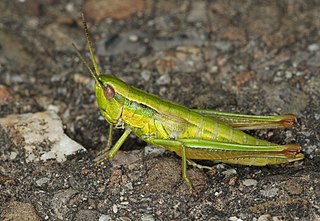
Gomphocerinae, the slant-faced grasshoppers, are a subfamily of grasshoppers found on every continent but Antarctica and Australia.

Acridini is a tribe of insects in the subfamily Acridinae, of the insect family Acrididae and are sometimes called "silent slant-faced grasshoppers".

Acrotylus is a genus of grasshopper in the family Oedipodinae and the type genus of the tribe Acrotylini, containing the following species:

Oxyinae is subfamily of grasshoppers in the family Acrididae. Species are distributed throughout Africa and Australasia.

Oxyini is one of two tribes of grasshoppers in the subfamily Oxyinae.
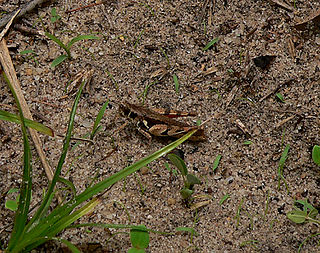
Catantopini is a tribe in the subfamily Catantopinae, a group of grasshoppers found in Africa, Asia and Australia.
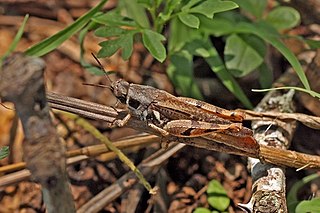
Catantops is a genus of grasshoppers in the tribe Catantopini.

The Cyrtacanthacridinae are a subfamily of Orthoptera: Caelifera in the family Acrididae. They are sometimes referred-to as bird locusts, criquets voyageurs in French-speaking Africa, and Knarrschrecken in German.

Valanga is a genus of grasshoppers in the family Acrididae and the bird grasshopper subfamily. Species are found from the Indian subcontinent through southeast Asia and the Korean peninsula to Australia and the Pacific islands.

The Eyprepocnemidinae are a subfamily of Acrididae in the Orthoptera: Caelifera. Species can be found in Africa, mainland Europe and Asia.

The Hemiacridinae are a subfamily of Acrididae in the Orthoptera: Caelifera. Species can be found in Africa, and Asia.

Dociostaurus is a genus of grasshoppers in the family Acrididae, subfamily Gomphocerinae, found in Africa, southern Europe and Asia.
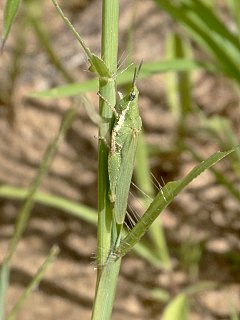
The Pyrgomorphinae are a sub-family of grasshoppers in the family Pyrgomorphidae. Species are found in, especially the warmer parts of: Central and South America, southern Europe, Africa, Asia, Australia and Pacific Islands. The type genus is Pyrgomorpha and names dates from "Pyrgomorphiden" by Brunner von Wattenwyl, 1874. The first use of Pyrgomorphinae was by Krauss in 1890.
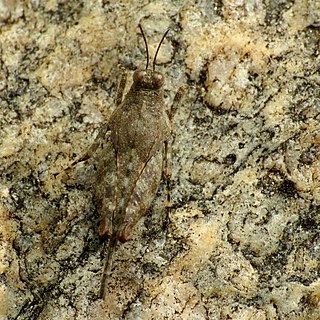
Paratettix is a genus of ground-hoppers or pygmy grasshoppers, with more than 60 described species found worldwide.
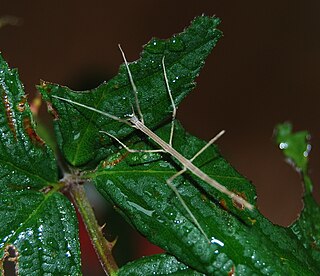
Clonaria is an Asian genus of stick insects in the family Diapheromeridae and subfamily Pachymorphinae.





















